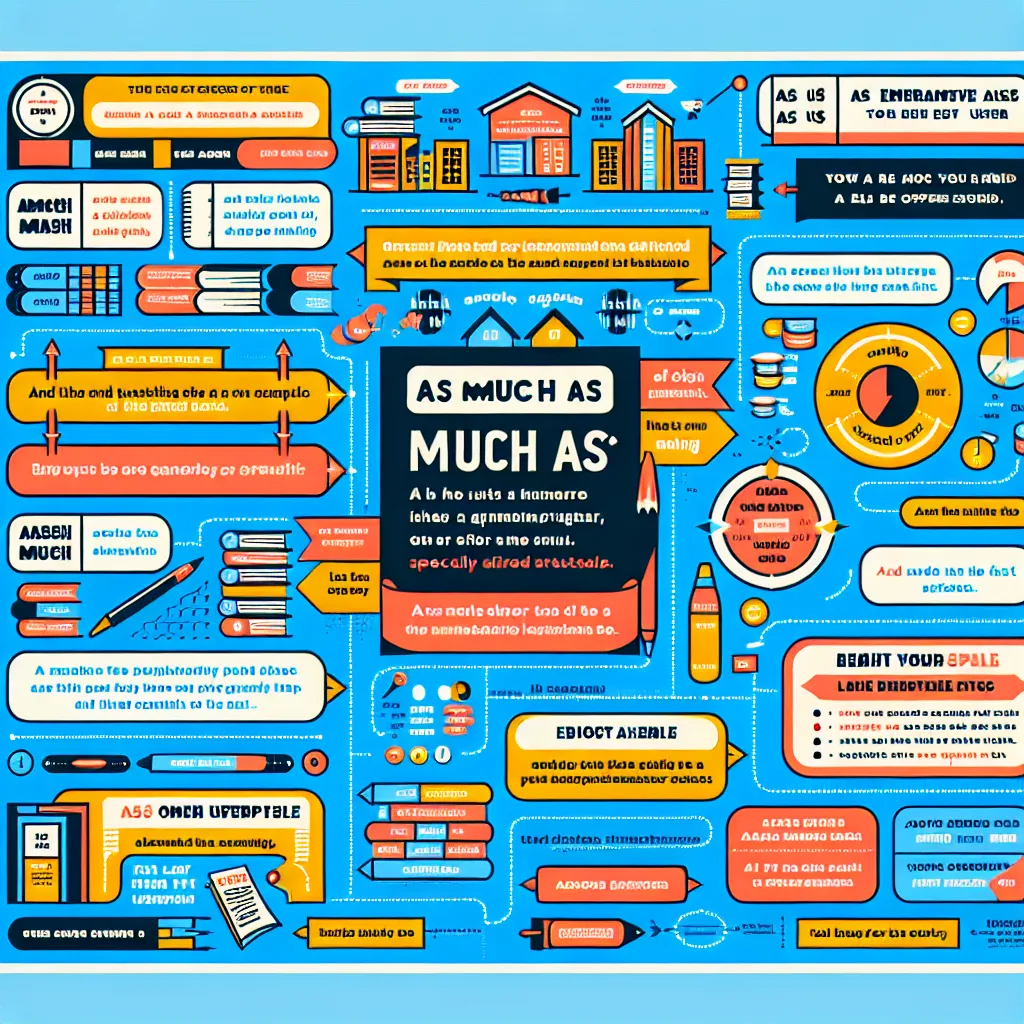The phrase “as much as” followed by a noun is a versatile comparative structure that frequently appears in IELTS exams. Understanding its usage can significantly enhance your language proficiency and help you achieve a higher band score. Let’s delve into the intricacies of this structure and explore how to apply it effectively in your IELTS tasks.
Understanding the “As Much As” + Noun Structure
The “as much as” + noun structure is used to make comparisons of quantity or degree between two things or situations. It implies that the quantities or degrees being compared are equal or nearly equal. This structure is particularly useful in IELTS Writing and Speaking tasks when you need to draw parallels or highlight similarities.

Basic Formula and Usage
The basic formula for using this structure is:
[Subject] + [Verb] + as much as + [Noun]
For example:
- “She earns as much as her brother.”
- “The new laptop costs as much as a used car.”
In these examples, the structure compares the earnings of two people and the cost of two items, respectively.
Applying “As Much As” + Noun in IELTS Writing
Incorporating this structure in your IELTS Writing tasks can demonstrate your command over complex grammatical structures, potentially boosting your Grammar and Coherence and Cohesion scores.
Task 1: Academic Reports
In Academic Task 1, you might use this structure to compare data:
“In 2020, the company invested as much as $10 million in research and development, which was equal to their expenditure on marketing.”
This sentence effectively compares two financial aspects of the company’s operations.
Task 2: Essay Writing
For Task 2 essays, this structure can be used to make impactful comparisons:
“Some argue that social media influences young people’s behavior as much as traditional parenting, highlighting the need for digital literacy education.”
This sentence compares the influence of social media to that of parenting, adding depth to the argument.
Enhancing IELTS Speaking with “As Much As” + Noun
In the Speaking test, using this structure can showcase your ability to make nuanced comparisons:
-
Part 1: “I enjoy reading as much as watching movies. Both activities allow me to explore new worlds and ideas.”
-
Part 2: “The historical site I visited attracted as much as a million visitors annually, demonstrating its cultural significance.”
-
Part 3: “In my opinion, practical experience counts as much as theoretical knowledge when it comes to succeeding in a career.”
These examples demonstrate how the structure can be seamlessly integrated into different parts of the Speaking test.
Advanced Usage and Variations
To aim for higher band scores, consider these advanced applications:
-
With Quantifiers:
“The project required twice as much funding as initially estimated.” -
In Negative Constructions:
“The new policy doesn’t generate as much public interest as the government had hoped.” -
With Adjectives:
“The issue is not as much controversial as it is complex.” -
In Passive Voice:
“As much attention should be given to mental health as to physical health in schools.”
Common Mistakes to Avoid
-
Confusing “As Much As” with “As Many As”:
Incorrect: “She has as much as books as her friend.”
Correct: “She has as many books as her friend.” -
Omitting “As” in the Second Part:
Incorrect: “He earns as much as a doctor earns.”
Correct: “He earns as much as a doctor does.” -
Using with Uncountable Nouns:
Incorrect: “I have as many information as you.”
Correct: “I have as much information as you.” -
Misplacing “As Much As” in the Sentence:
Incorrect: “As much as she works hard as her colleague.”
Correct: “She works as hard as her colleague.”
Conclusion
Mastering the “as much as” + noun structure can significantly enhance your IELTS performance. It allows for precise comparisons and adds sophistication to your language use. Practice incorporating this structure into your writing and speaking to demonstrate a high level of English proficiency. Remember to use it accurately and in context to maximize its impact on your IELTS scores.
To further improve, try crafting sentences using this structure in various contexts related to common IELTS topics such as education, technology, environment, and social issues. This practice will help you use the structure more naturally and effectively during the actual exam.